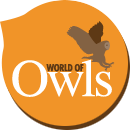BooBook Owl
Boobook Owls
Ninox boobook
The Boobook is the smallest and most familiar of the Owls in Australia. It is more often heard than seen due to its familiar two note call, sometimes repeated for hours on end, which has been likened to that of a European Cuckoo. These sometimes playful little Owls are also known as Mopoke, Morepork, Spotted Owl, and Marbled Owl.
Description: Upperparts are pale to dark brown, depending on locality or individual variation, with white spots on the wings and back. The underparts are cream to buff with broad pale to dark brown streaks and mottling, the indistinct facial disc being much paler than general colour with a large dark patch behind eye. the bill is a blue-grey, and feet pale blue-grey. Adults have a greenish-yellow iris, while a juvenile’s is brown. The females are slightly larger and more richly coloured. Immatures are paler than adults.
Size: Female – Length 27-36cm (10½-14″) Wingspan 70-85cm (25½-33½”)
Weight 194-360g (7-12½oz)
Male – Length 23-36cm (9-14″) Wingspan 70-85cm (25½-33½”)
Weight 170-298g (6-10½oz)
Voice: Normal call is a brief double hoot with the second note pitched lower than the first, each note lasting for about a quarter of a second with a half second gap in between. There is usually a brief pause and then the call is repeated at a frequency of about twenty calls a minute. Calling may last for only a minute or two or may go on for hours. Boobooks also call in a low, soft ‘pot pot pot por pot pot por’. This is a call between mated birds but its use is not confined to the breeding season. The breeding call is a tremulous braying call, the equivalent of the bleating call of the Powerful Owl.
Hunting & Food: The type of prey taken seems to vary greatly with individual birds, the majority of Boobooks taking mostly insects and arthropods. Some Boobooks have been known to hunt mainly mice or small ground birds. Flying insects are taken by hawking flight through and above trees, taking only one insect each flight, and transferring it to the beak before bringing it to the nest or landing to eat it. Other insects are snatched from foliage or caught on the ground. Boobooks often hunt around street lights and along roads where many are hit by cars.
Breeding: The breeding season is August and September almost throughout Australia. Pairs perch close together with the male giving ‘pot pot por’ call for long periods. This may commence well before start of season. One or both birds may roost in nest hole together for weeks before breeding starts but these out-of-season roosts are not always chosen as the eventual nest site. The nest can be a wide variety of tree hollows – the tree may be alive or dead with a hole in a limb or the main trunk, upright or sloping. The male cleans out the hollow before eggs are laid – usually 2 or 3, rarely up to 5. The eggs are white and almost round, being 40-45mm (1.6-1.8″) by 32-37mm (1.¼-1½”). They are laid at 1 to 2 day intervals and are incubated for 35 days. The young have white down and are fledged in 5 to 6 weeks. Like other Ninox Owls, they leave the nest well below full size and with abundant down. They are probably dependent on the parents for 2 to 3 months after this.
Habitat: Almost anywhere where there are trees. Eucalypt forest and woodland appears to be the optimum habitat but also mallee, mulga, semi-desert, tree-lined creeks, residual timber on farmland, leafy suburbs, offshore islands. They are generally absent from dense rainforest, except for the Red Boobook of north Queensland.
Distribution: Almost Australia-wide including many offshore islands. Lesser Sunda Islands, Timor and New Guinea.

